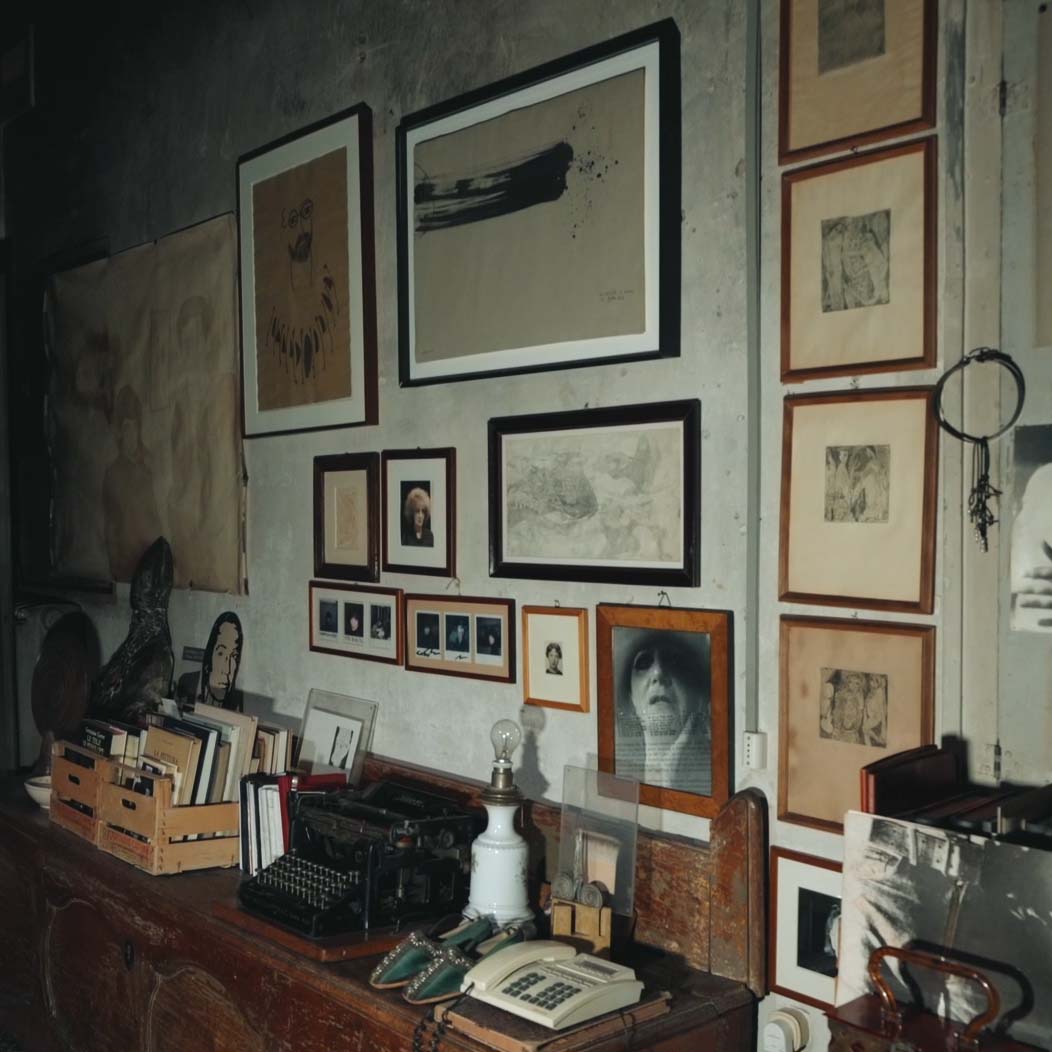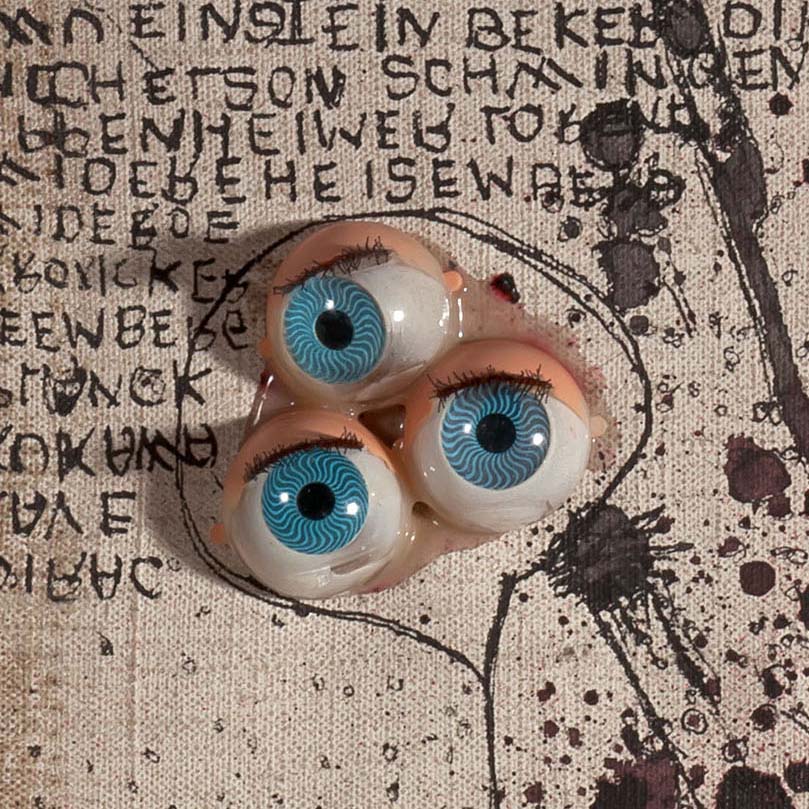Driven out of the Dresden Academy by the Nazis, Otto Dix and his family fled to the idyllic Lake Constance region. His home there is a wonderful museum. Dix’ works will be on show in Frankfurt this autumn.
The view is extensive, you gaze out over a few roofs, old trees, the Lower Lake on which a few small yachts are sailing, across as far as the Swiss side. What an idyll, a peaceful landscape that resembled a painted scenery. Otto Dix was also aware how unique this region is, but it did not make him happy. “A beautiful paradise. Pretty enough to make you puke,” is how the artist described his exile in the area. In 1933 he was one of the first to lose his professorship at Dresden Academy. The artist who embraced New Objectivity and documented the dark sides of the inter-War years in Germany in his works was a real thorn in the flesh of the Nazis. His paintings were diametrically opposed to the edifying folk-(inspired) art the new ruling power demanded.

With his wife Martha and their three children Nelly, Ursus and Jan Dix moved to the Lake Constance region, first to Randegg and later in 1936 to a newly-built house in Hemmenhofen on Höri peninsula on the Lower Lake. For 33 years up until his death in 1969 the artist lived here with his family, and eventually make his peace with the landscape. Today, the house is a spectacular museum, wonderfully restored, a place that conveys an excellent impression of the artist’s life.
The man who documented the German inter-War years
This coming autumn Otto Dix will play an important role in the SCHIRN exhibition “Splendor and Misery in the Weimar Republic”. His paintings still shape the picture we have of the period between the two World Wars, and give a direct and critical account of both the enormous social deprivation and the pulsating life of Berlin during that period. When Dix moved to Hemmenhofen he had most of these paintings with him. The “Portrait of the Dancer Anita Berber”, the triptych “Big City”, the “Triumph of Death”: All these paintings that have long since become famous actually hung on the walls of the plain, modern country house at Lake Constance. Designed by Dresden architect Arno Schleicher, it took just a few months to build.



Today, visitors can still discover these paintings there – not the originals but as silhouettes in shades of gray. As the exhibition in his home is meant to narrate as accurately as possible how the Dix family lived there, the furnishings are as close to the originals as possible. The sketches of the paintings hang where the paintings once did when the artist moved in. The house itself did not belong to him, but his wife Martha, who unlike the artist came from a wealthy family.
Proximity to the neutral Switzerland
Dix acquired the plot through Walter Kaesbach, the previous Director of the Düsseldorf Art Academy. The latter had also been summarily dismissed by the Nazis, and subsequently moved to Hemmenhofen. In all likelihood the proximity to neutral Switzerland (the border town of Stein am Rhein is just ten kilometers away) played a key role in Dix’ decision to move to Höri, though there is no evidence to substantiate this.

A tour through the house is like a journey back in time. On the ground floor you discover the piano Martha regularly played. Next to it the sheet music: Bach, Beethoven, Brahms. And an old gramophone that played shellac records. The Dix family was sociable: it was no rarity that there were parties or they had guests in Hemmenhofen. A wide set of wooden stairs leads to the first floor, where Dix had his studio. The room is large, gray, tidy; in the middle stands an easel and light pours in through an enormous window. Dix had a spacious double glazed window installed here. Frequently, his children played here while he worked in the studio. If they got too loud the artist threw them out.
Landscape paintings – that was emigration
Several original paintings of flowers in an expressive style hang on the wall. During his year in Hemmenhofen Dix altered his painting style radically. He often worked outside. He spent the mornings in the studio, and the afternoons outside. “I painted landscapes – that was emigration,” he later said to author and photographer Hans Kinkel by way of explaining this break. And it would be this change of style that was later responsible when after the end of World War II Dix was not being able to resume the career he abandoned before the Nazi era. Although he exhibited at the first “Documenta” in 1955 it took a long time before his work received the same appreciation again.

SPLENDOR AND MISERY IN THE WEIMAR REPUBLIC
Presale has started! Get one of the first 1.000 tickets for 10 € instead of 12 €



These boots are made for walking
Shoes are silent storytellers, revealing secrets about their wearer's personality, status and desires. No wonder, then, that artists like Carol Rama...

Seeing nature anew – through a cube
In his early work, HANS HAACKE addressed the relationship between art and nature as well as the social interest in the reciprocal relationship between...

The film to the exhibition: Hans Haacke. Retrospective
A legend of institutional critique, an advocate of democracy, and an artist’s artist: The film accompanying the major retrospective at the SCHIRN...

A new look at the artist – “L’altra metà dell’avanguardia 1910–1940”
With “L’altra metà dell’avanguardia 1910–1940”, in 1980 Lea Vergine curated an exhibition at the Palazzo Reale in Milan that was one of the first...

Non-human living sculptures by Hans Haacke and Pierre Huyghe
In his early work, HANS HAACKE already integrated animals and plants as co-actors into his art. In that way he not only laid the foundations for a...

CURATOR TALK. CAROL RAMA
SCHIRN curator Martina Weinhart talks to Christina Mundici, director of the Carol Rama Archive in Turin, editor of the first Catalogue Raisonné and...

Freedom costs peanuts
HANS HAACKE responded immediately in 1990 to the fall of the Berlin Wall and turned a watchtower into art.

The film to the exhibition: CAROL RAMA. A REBEL OF MODERNITY
Radical, inventive, modern: The film accompanying the major retrospective at the SCHIRN provides insights into CAROL RAMA's work.

Now at the SCHIRN: Hans Haacke. Retrospective
A legend of institutional critique, an advocate of democracy, and an artist’s artist: the SCHIRN presents the groundbreaking work of the compelling...

Carol Rama’s Studio: A nucleus of creativity
CAROL RAMA determinedly forged her own path through the art world. Her spectacularly staged studio in Turin was opened to the public only a few years...

PANEL: POLITICAL ACTIVISM BY SELMA SELMAN
Hosted by Arnisa Zeqo, Amila Ramović and Zippora Elders speak with the artist Selma Selman about her artistic career, the exhibition SELMA SELMAN....

Now at the SCHIRN: Carol Rama. A rebel of Modernity
Radical, inventive, modern: the SCHIRN is presenting a major survey exhibition of CAROL RAMA’s work for the first time in Germany.